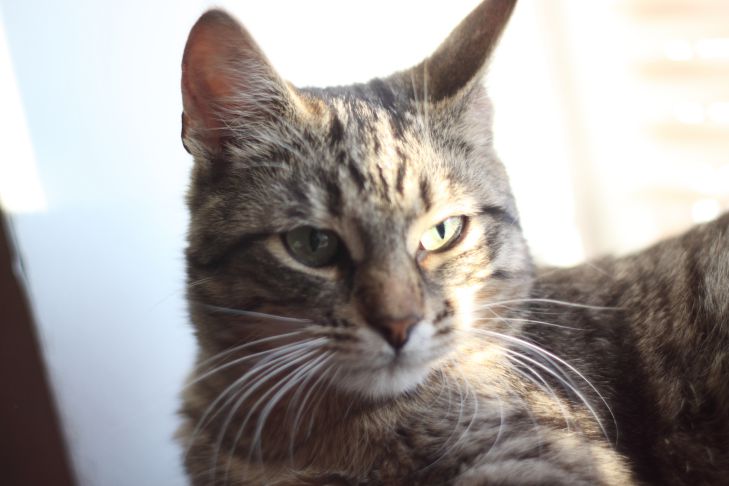How to Understand a Cat: Important Information for Owners of Furry Pets
It's hard to believe, but a cat's ears have more than two dozen muscles that allow them to rotate 180 degrees forward, backward, and down.
Although they move in the direction of sound like scanning radars, they serve more than just hearing.
The ears and tail (we'll talk about them later) are a vital part of a cat's body language, and interpreting them correctly can help you better understand your pet's mood and, in some cases, save you from injury.
Relaxed cat
As a rule, the ears of a relaxed cat are directed slightly to the side and slightly forward. This indicates contentment and a sense of well-being. Such a cat is not aggressive and not dangerous.
An anxious and interested cat
When a cat is alert or interested in something, its ears are erect and pointed forward. It usually greets you with its ears up, giving a friendly greeting.

Nervous cat
If your cat's ears are twitching, it means that it is agitated and nervous. Pick up your cat and calm it down. Constant ear twitching can be a sign of some kind of illness.
A sign of aggression is the movement of the cat's ears back and forth, which indicates increased aggressiveness.
If the ears go from a vertical position to a completely horizontal position, this indicates increased fear or irritation and is a warning for you to leave the cat alone. If you notice that your cat constantly holds its ears horizontally, this may indicate an ear infection or an infestation of ear mites. In this case, you should contact your veterinarian.
Attacking behavior pattern
When the ears are pinned back against the head in a defensive position, your cat is very scared and may attack. In attack mode, a cat instinctively pins its ears back against its head, protecting them from the claws and teeth of an opponent during a fight. Ears that point back, somewhere between "alert" and "defensive," indicate an aggressive cat that may attack.
Knowing when a cat is likely to attack can help prevent injury. If the ears are pointed backwards (a sure sign of aggression), never try to touch or pick up the cat because you risk being bitten or scratched - injuries that sometimes require hospitalization.
Contradictory cat
A cat's ears can move independently of each other. When they are in different positions, the cat experiences conflicting feelings and does not know how to react. It may go away to assess the situation. Then its ears will take one position or another depending on how the cat interprets the situation.
Understanding Cat Body Language: Tail
Your cat's tail is like a big apostrophe at the end of her body, which is great for expressing affection, aggression, fear, and happiness. One of the most basic tail movements is a frantic back-and-forth swish, sometimes called a "sword tail."
Whether it's a wild cat chasing a zebra or a domestic cat chasing a gopher, it will slash its tail in the air to encourage its prey to move and begin the hunt. At home, it's best to leave the cat alone until it calms down or throw it an attack toy. Don't pick up a cat with its tail slashing in the air because you could be the target of an attack.
Also, you should not hug a cat when it is in a state of defensive aggression. In this state, the tail is lowered, but its tip is bent upwards. This indicates that something has attracted its attention and it is nervous, defensive and unsure of its surroundings. If you try to touch it, it may attack.
A happy cat holds its tail high, and if it greets you at the door with its tail wagging, it means it is happy to see you. It is at such moments that you can show your cat all your love, and it will accept it with gratitude.
If you've brought a new cat into your home, learning to read tail language can help prevent a fight before it starts.
I'm sure you won't want to pick up the aggressor in this state, but a few shots of water from a water pistol will help convince him to back off.
The tail is the perfect complement to a cat's expression of emotion. There is poetry in the way a contented, serene cat skillfully wraps its tail around itself, or in the way a Siamese cat proudly holds its tail like a flame behind its back.
Cats even use their tails when they sleep. Does he wag his tail in his sleep? She imagines herself as a lion in the Serengeti, chasing a wild animal.
We previously reported on the return of the red ducks .
